What is a domain name, anyway? While you probably type domains into your browser search bar every day, have you ever stopped to think about how it all works?
The technology may seem complicated, but knowing how domain names function is very useful to understand, both for new and experienced users of WordPress. If you’re setting up a new website or blog, you’ll want to keep reading!
In this post, we’ll explore what a domain name is, the different types of TLDs (or endings) available, and how to pick a good website name. We’ll also briefly show you the different ways you can buy a domain name. Let’s go!
- What Is a Domain Name?
- How Are Domain Names and Web Hosting Different?
- Why Is a Domain Name Important?
- How Domains and URLs Work
- What Is the Domain Name System (DNS)?
- Tips to Pick a Good Domain Name
- Registering a Domain Name
- Free vs. Paid Domain Names
- Ways to Purchase a Domain
- What Is Domain Privacy and Why Do You Need It?
- What Is Domain Parking?
- You Now Own a Domain. Now What? What to Do After the Registration Process
- Conclusion
What Is a Domain Name?
In short, a domain name is the text that you type into your browser address bar. Common examples of domains include Google.com, WPAstra.com, or Amazon.com. Even if you’re not familiar with technology, you definitely know what a domain is.
How Are Domain Names and Web Hosting Different?
It’s common to confuse a domain name with web hosting. Although you’ll need both to run a website, they are separate things.
A domain name and web hosting are normally purchased separately. This reflects the fact that they are two different technologies, although many web hosts combine them into a single package to make it easier for their customers.
Websites use domain names to identify themselves, while the servers that host those websites use IP addresses.
Domain names are mapped to the web hosting server using DNS, the Domain Name System, which we explain more about below. DNS uses huge databases that map domain names to their corresponding server’s IP address.
It works a bit like a phone book. Your name, the domain name, is listed with your phone number, the IP address. When you type the domain into a browser, the browser contacts your default DNS server and looks up the IP address.
If the DNS server has a record of that address, it provides the IP address to your browser and the browser connects, displaying the website.
If the DNS server doesn’t have that particular domain name mapped, it queries a resolver server, TLD server, or root server to find the address.
All this happens in less than a second. Pretty cool, isn’t it?
Why Is a Domain Name Important?
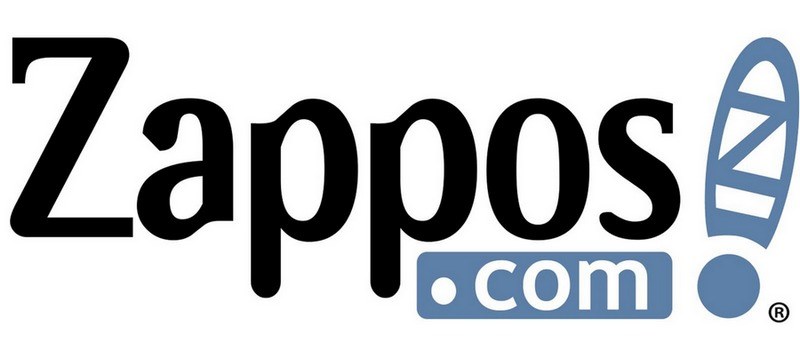
First and foremost, a domain name is the face of your brand. It’s what consumers will see every time they search for you on Google, hear about you in the news, or visit your website to read your blog or buy your products.
A domain name is especially important if your business is primarily online and uses the domain name as the brand name. Zappos.com is a great example: ZapposShoesAndFootwear.com isn’t quite as catchy and probably won’t stick in anyone’s mind.
Secondly, a domain is where all of your content and products will be located. Every link to your website will include it front and center. This is why shorter domains are generally better than longer ones.
A link to ABCStore.com/product is much easier to use than ABCStoreAndCafeChicago.com/product on social media, in email, and via text message.
How Domains and URLs Work
Domain vs. URL
What’s the difference between a domain and a URL? Good question! It’s very easy to confuse the two. In short, a domain is the name + .com (or another TLD), while the URL is the entire web address for a specific location. For example:
- Domain: WPAstra.com
- URL: https://git-staging.wpastra.com
Domain name refers to the domain plus the TLD. In everyday life, we tend to refer to websites in this way. For example:
URL, which stands for Universal Resource Locator, is the specific web address that the computer reads to direct you to a web page. If the domain is the “human readable” version, the URL is the computer-readable one. The URL includes all of the different parts we mentioned above: https, www, subdomain, name, TLDs, subfolders and files.
Some examples of URLs are:
- https://www.google.com
- https://git-staging.wpastra.com/updates/astra-3-0/
- https://en.wikipedia.org/wiki/Main_Page
Different Parts of a URL
What makes up a URL? Probably more than you’ve realized!
HTTP/HTTPS

This is the first part of the URL. HTTP stands for Hypertext Transfer Protocol. It is the protocol that underlies the Internet and connects documents via hyperlinks. If you link directly to another website, you’ll need to include this part of the URL.
HTTPS is the same technology, but made more secure (S stands for Secure.) While most website users don’t need to understand the details of HTTP/S and computer networking, it is important to make sure you install a SSL certificate on your site.
This will make your site be HTTPS (not HTTP) and much safer for your users. If a site has SSL installed, it will also have a little padlock icon next to the URL in the address bar.
WWW
WWW, which is short for World Wide Web, comes after HTTPS. Unlike HTTPS, the WWW part of a domain is optional. When you set up your site, you choose whether you’d like to include it or not. You can be www.Site.com or just Site.com. You can then just redirect one to the other.
For example, our site, Astra.com, doesn’t use the www. prefix. As you can see, https://www.wpastra.com redirects to https://git-staging.wpastra.com.
Subdomain

A subdomain is the next part of the URL. Many websites use subdomains to differentiate a particular part of their website. One of the most common examples is an eCommerce shop, which is often set up as shop.website.com or store.website.com, as in the Museum of Modern Art’s website in the image above. Wikipedia also uses subdomains for different languages:
- En.Wikipedia.org: English-language Wikipedia
- De.Wikipedia.org: German language Wikipedia
- Fr.Wikipedia.org: French language Wikipedia
Using subdomains can affect your SEO ranking, so if you use one, first understand the consequences. Read this guide to understand more about subdomains and SEO.
Domain Name

Now, we’ve arrived at the domain name itself. This is what most people generally mean when they use the term, “domain name.” Domain names can only include letters, numbers, and hyphens. Other symbols like @, ^, $, #, or underscores are not allowed.
From a human point of view, this is the most important part of the URL — that’s why it is often so expensive when paired with a TLD like .com! While there are essentially an unlimited number of IP addresses, there are only a small number of comprehensible, short domain names available for the most commonly used TLDs.
TLD

TLD stands for Top Level Domain and is the part of the URL immediately after the domain name. TLDs are also sometimes called domain extensions. There are a few kinds of TLDs:
The original and most common extensions include:
- .com
- Originally for companies, now the default for all websites
- .net
- Originally for computer networking, now used by many websites
- .org
- Primarily for nonprofit organizations, but also used for other purposes
- Country code TLDs are designed for specific countries. The most popular ones are naturally for larger countries. However, others are popular because they work well with regular English words.
- .us
- For sites related to the United States of America
- .de
- For sites related to Germany
- .il
- For sites related to Israel
- .cn
- For sites related to China
- .ly
- Associated with Libya, this extension is popular among startups, as it resembles the English -ly suffix.
- .ai
- Associated with Anguilla, .ai is popular with artificial intelligence startups.
- .co
- Associated with Colombia, .co is popular among startups.
- .us
- Sponsored TLDs are domains associated with a particular theme, organization, or geographical location. Some sponsored TLDs are reserved for specific uses and cannot be registered except for certain types of sites.
- .edu
- Reserved for universities and other educational institutions
- .gov
- Reserved for government institutions
- .jobs
- Reserved for sites related to jobs and employment
- .asia
- For websites located in or related to Asia
- .int
- Designed for international organizations
- .museum
- Designed for museums
- .edu
Subdirectories

Finally, we have any folders or files that come after the TLD. These are called subdirectories and are the actual files and folders on the web server. So, for example, if you’re reading this article on the Astra blog, the subdirectory is /blog.
Pages and files in subdirectories are considered a part of the main domain by search engines, whereas subdomains are sometimes considered to be separate sites.
Whew, that was a long explanation for such a simple thing! Now, let’s talk a little bit about the technology that makes it all work.
What Is the Domain Name System (DNS)?
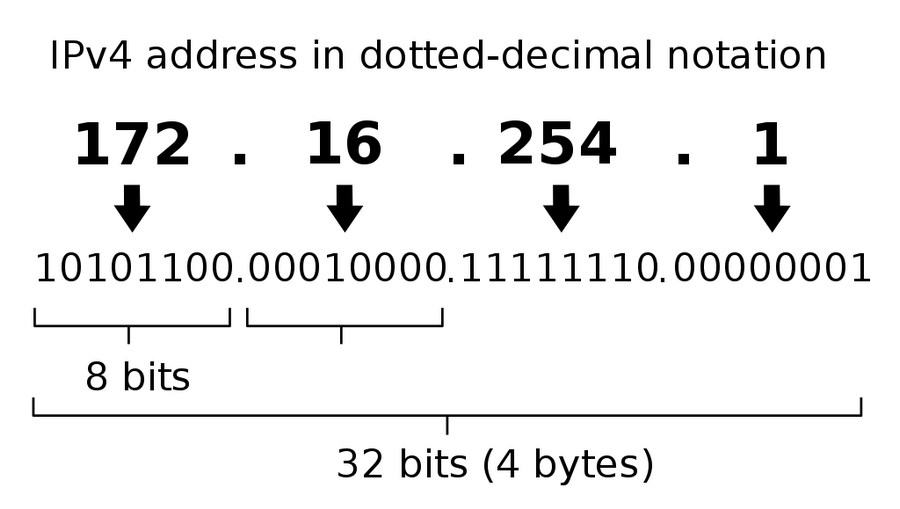
The Domain Name System is one technology underlying the Internet. It translates human-readable domain names like Google.com or WPAstra.com into IP addresses like 37.221.30.237 so that your browser can understand them and display the page for you to read.
DNS is managed by an organization called ICANN, which is headquartered in California.
The DNS system is quite technical and hard to explain briefly, but the important thing to understand is that domain names are limited to one per IP address. The domain Google.com cannot be shared by more than one IP; when you type it in, only a single website is loaded. This is why a domain name is so valuable.
Tips to Pick a Good Domain Name
Use Your Business Name
The simplest solutions are often the best ones. If the name of your business is available as a domain, just go with that. Likewise, if you can shorten or somehow abbreviate your business name, that name may be available. This is especially useful if your business is targeted in a particular geographical area, like New York City. ShoesNYC.com is a less-in-demand and subsequently less expensive domain name than Shoes.com.
Check Out the Competition
Before picking any name, you should first check out your competition. You certainly don’t want to start building a business and then later realize a competitor already uses your name!
Should your name be similar to your competitors? It depends. If your name needs to communicate something about your business or industry, it inevitably might need to be similar to your competition. For example, a store selling shoes will probably need to include some variation or synonym of the word shoe in its name.

On the other hand, it can be beneficial to pick a name very different from your competitors. When it first launched, Amazon was a very unique name and significantly different from Borders, Barnes and Noble, and other companies selling books.
Keep it Short
For the most part, the shorter your domain name is, the better. While it may be nearly impossible to get one that is five letters or less, there are plenty of domains available that are less than ten letters. At maximum, your domain should never be more than twelve or thirteen letters, especially if it is a complex name.
In certain situations, you may be able to break this rule, especially if the name contains commonly used words, is easy to spell, or is otherwise memorable. HuffPost.com, for example, built up most of its traffic and reputation as The Huffington Post with a fairly long domain name (huffingtonpost.com.) They only recently changed the name to HuffPost in 2017. Likewise, Stack Overflow (stackoverflow.com) has 13 letters, but it is a memorable name with a strong brand.
Avoid Trademarks
While domain names can’t be trademarked, company names can be. If you plan on using your domain name as a business, first check to make sure the name isn’t trademarked.
Try one of the many tools listed below to ensure that your company name isn’t already taken. When in doubt, always consult a trademark attorney.
Make It Easy to Type and Remember
Since there are so many websites online today, it’s important to keep your domain name as easy and simple to remember as possible.
A good experiment to run is called “The Phone Test.” The idea is simple: call up a friend on the phone and read them your list of potential names. Ask your friend to write down all of the names with their best guess of its spelling.
Then, review the results. Have your friend read back the names, letter by letter. Did they understand the name and spell it correctly? A good name should be immediately understandable and not require any follow-up questions or explanations. This is especially true if your marketing plan relies on word of mouth or sharing on social media.
Use Keywords in Your Domain Name
Having keywords in your domain name is useful, although it’s less important today than in the past. While having a keyword like “shoes” in your domain is no doubt helpful if you’re selling shoes, it is just one factor of many.
This is easy to observe: Shoes.com failed and lost to Zappos.
Use the Right Domain Name Extensions
While there are many different domain name extensions (TLDs), only a few of them are truly worthwhile for serious projects. More obscure TLDs like .biz or .info have a bad reputation, while others like .ly are generally just novelties.
Since .com is used by virtually every business and organization around the world, it is trusted by most people. Ergo, websites with a global or American audience should use .com and not .io, .ly, or other TLDs.
In certain countries, some TLDs are more popular than .coms. For example, .de and .fr domains are popular in Germany and France, respectively. These TLDs also have SEO benefits, which can be helpful if your eCommerce store sells primarily to certain regions.
In other words, if you are selling products primarily to a French audience, it may make sense to use a .fr domain If this is the situation in your region or country, it may make sense to use your local TLD.
In other situations, using a non-standard TLD might be also popular and justified. For example, in the tech industry, companies working on artificial intelligence (AI) often use the .ai domain.
However, they almost always own the corresponding .com (e.g. Site.ai also owns SiteAI.com.)
Most non-technical people are only aware of .com and assume that all websites use it. Even if you are a nonprofit organization and have .org as a part of your branded name, many people will still type Name.com into their browser address bar. If you don’t own that domain, you could lose out on a ton of traffic!
So, you should always try first to get a .com, unless a different TLD is more popular in your particular geographical location or your audience is familiar with the uncommon TLD.
Just Google It

Having said all of that — instead of using the address bar, many people just use Google to navigate to a site. For this reason, some websites use a .com with a slightly modified domain name.
Rather than Startup.io or Startup.ly, they add a prefix or suffix like get, HQ, or hub to the name. Dropbox, the well-known file storage service, started out with getdropbox.com and didn’t purchase dropbox.com until a year after it launched.
If you want to use a .com but the domain isn’t available, try adding one of the following prefixes or suffixes to your name:
- Get
- HQ
- Hub
- About
- Why
- Center/Centre
Check Social Media Handles
It’s also useful to check popular social media sites and see if the name is in use. While you may not be able to get the exact match, it isn’t that important. Twitter.com/Coke isn’t managed by Coca-Cola for example. The important thing is to ensure that there are no competitors using a similar name.
A really useful tool for checking multiple social media handles simultaneously is NameChk.com. Using it, you can quickly check the availability of a name on Facebook, Twitter, Reddit, Tumblr, and dozens of other social media websites and apps.
Avoid Hyphens in Domain Names
Hyphens just make names more complicated than they need to be. If, for some reason, your name needs to have a hyphen (for example, a law firm that uses two partners’ surnames), you should still buy and use a domain without the hyphens.
Try Domain Name Generators

Need help coming up with a usable domain name? Try a domain name generator tool! There are dozens of free ones available, each with their own theme and customization options.
Here are some of our favorite ones:
- Panabee combines two words (or more), creates variations of them, and displays the availability of .com and other TLDs.
- Domain Wheel uses AI to generate domains from your keywords.
- Instant Domain Search is a lightning-quick tool to quickly see if your domain is available. There is also a cool feature that plays an audio clip of your domain name.
- NameSmith lets you add up to five keywords and then mashes them together in various combinations.
Registering a Domain Name
Now let’s talk about registering a domain. There are many factors to consider.
Where Do You Buy a Domain Name?
Domain names are purchased from organizations called registrars. Virtually every domain registrar is also a web hosting company. Some examples of registrars include SiteGround, NameCheap, GoDaddy, BlueHost, and DreamHost.
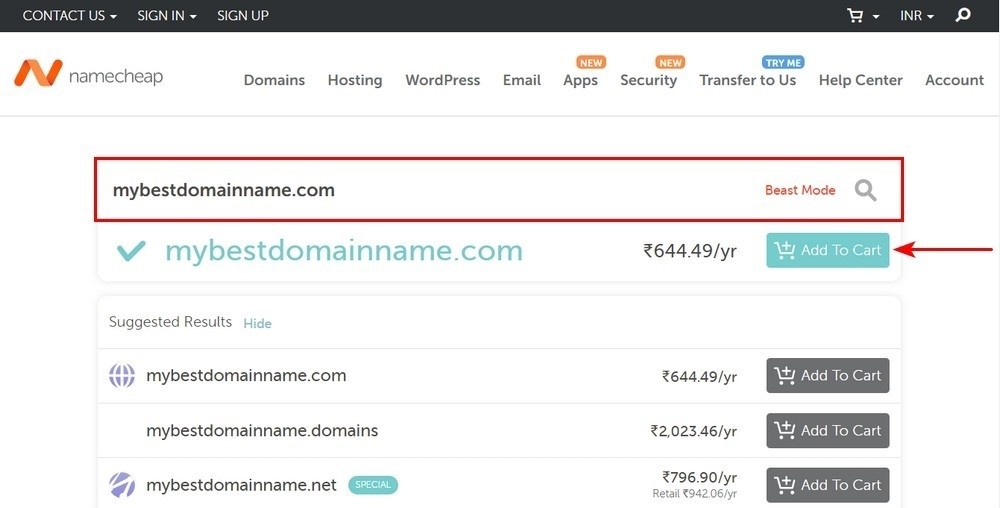
The process of purchasing a new domain name is straightforward and only takes a few steps:
- Visit the website of a domain registrar, type in your desired domain name, and press search.
- If the domain has already been registered, you’ll see a “not available” message. Some already-registered domains are for sale, while others aren’t. See the section below about buying a domain name.
- If the domain is free, you can go ahead and buy it. Prices vary depending on the registrar and the TLD, but unregistered .com domains are usually about $10/year. You can also pre-purchase them for years in advance.
- During the checkout process, you’ll have to add some information about yourself or your company, including name, address, and phone number. Depending on the domain and the registrar, can also pay extra for WHOIS protection, which will hide this information from being publicly accessible..
- Done! You’re now the proud owner of a new domain.
Free vs. Paid Domain Names
Some services offer free domain names. Usually, they aren’t truly “free” but are instead included as a part of a website hosting package. BlueHost, for example, offers a “free” domain name registration for one year with every hosting package.
Other website builders like Shopify or SquareSpace also offer domains as a part of their monthly plans, but realistically, these aren’t “free” as in “no cost.” The process of taking your domain with you when you leave can also be complicated.
There are also some other websites that offer a free web hosting package, but these almost always are supported by ads or are subdomains, not true domains.
For example, WordPress.com offers a free plan for your blog or other site but the domain will always be SiteName.WordPress.com.
In general, you should avoid using a free domain, unless your website is just a side project or experiment. The small cost of $10/year is worth it!
Go for a Trustworthy Domain Registrar
Finally, you should try to register your domain name with a reputable registrar. Some registrars have a bad reputation or have been caught registering domains that their users search for using their platform.
This is called “Domain name front running.” Although it’s not a common practice these days, it’s still something to be aware of.
We recommend the following name registrars as trustworthy and reliable:
Separate Your Registrar and Host
It is also often recommended, although not required, to register your domain name with a service separately from your web hosting. Why? There are a few important reasons.
- It prevents your host from “taking your domain hostage” by raising the price of domain renewal. If you register your domain with your host, it is often very difficult or impossible to move it to another service while retaining the same host. You’ll often need to cancel the hosting service entirely.
- It allows you to look around and choose the cheapest registrars. While many hosts do offer domain registration, some charge higher prices than is typical. SquareSpace, for example, charges $20/year for a domain, which is double that of NameCheap, at $8.88/year.
- It distributes your vulnerabilities across multiple locations. If you manage your domain and web hosting separately, you can more easily adapt in the event of a security-related event, such as a hack or data breach. For example, imagine that your web host is hacked. You can redirect your domain’s DNS servers to a different host with your backup servers. If you registered the domain and site hosting together, however, you may not even be able to change the DNS settings.
Ways to Purchase a Domain
Now that you understand how a domain name works and how to choose a good one, it’s time to buy one! There are a few different ways to purchase a domain name.
Purchase a New Domain Name
The easiest way to acquire a new domain name is to simply purchase it directly from a registrar. To do this, go to a domain registrar’s website, type in the name, and press go. If it’s available, you can purchase it immediately.
Typically, registrars will offer a few different add-ons to go with your domain, including WHOIS protection. Some registrars will also give you a discount if you pay for multiple years in advance.
We recommend SiteGround and NameCheap, both for domain registration and for hosting.
Purchase a Domain for Sale

If the domain name you want to use for your project is already owned by someone else but isn’t being used, you can try to purchase it. There are ways to do this, with the most basic being a simple transaction.
If you’re looking to buy a particular domain name, there will usually be a link to buy it directly on the website itself. Otherwise, domains are generally listed on specific websites, along with their price and/or contact information. Here are a couple popular domain marketplaces:
Win a Domain Name in an Auction
An additional way to purchase a domain is via auction. Domains that are no longer required but have value are put up for auction. Functionally, this process operates mostly the same as with domains that are for sale, except with a deadline.
Most domain registrars have a separate section for auctions:
Purchase an Expired Domain Name
Finally, it is possible to purchase a domain name that has expired but not completely returned to the regular registration database. This is a good opportunity to grab a domain at a lower price before someone else re-registers it.
The best place to look for expired domains is at ExpireDomains.net. You can also browse lists of deleted domains, which are purchasable for the regular domain registration cost.
What Is Domain Privacy and Why Do You Need It?
When registering or purchasing a new domain name, you will be required to add your name, phone number, physical address, and other information. This information is then displayed in the WHOIS database and can be publicly accessed by anyone.
For a small additional fee, you can add the option of hiding your name and other information from the WHOIS database. Some registrars also include this for free.
Many TLDs are private by default and don’t require an extra payment. These include most European Union-based TLDs like .de (Germany), .fr (France), and .nl (Netherlands), as well as .ca (Canada). Note that .it (Italy) does not allow for domain privacy.
Others domains, including .us (United States), .au (Australia), and .in (India) explicitly forbid privacy protections and the registration information is required to be public by law.
Why Should You Bother With Domain Privacy?
There are many reasons, some of which aren’t obvious at first.
- It hides your private information and protects you from identity theft. The less information about you that is available, the better. Identity thieves can and will use anything they can find.
- It prevents, or at least minimizes, spam and marketing emails. Most spam and unsolicited marketing messages come from illegally-gathered databases. If your domain registration information is publicly-available, it’s much more likely that you’ll receive spam emails and marketing messages from scammers.
- It helps prevent domain hijacking. Domain hijacking is when a bad actor manages to take control of your domain, typically by pretending to be you and then transferring your domain to a different account that they control. While this does not happen often anymore, it still is something to be aware of. Keeping your personal information private helps prevent hijackers from targeting you in the first place.
What Is Domain Parking?
As a final note, let’s talk a little bit about domain parking. Domain parking is when someone purchases a domain but doesn’t use it to create a website. The domain is simply “parked” and displays a “coming soon” message, a link to the domain registrar’s page (“This domain was purchased at GoDaddy.com”), or nothing at all.
Since registering a domain only costs about $10/year, it is a common practice to buy up many of them for purposes other than creating a website. Some owners buy domains with the sole purpose of reselling them for profit, while others save them for use with future projects.
You Now Own a Domain. Now What? What to Do After the Registration Process
You are now the owner of a new domain. Congratulations! Now what should you do?
Sync Your Domain and Hosting

If you purchased your domain name together with your hosting package, you can likely skip this step. If you bought them separately, keep reading! If you bought a domain but haven’t purchased a hosting plan yet, we recommend SiteGround.
Once you have a domain, you need to connect it with your hosting plan. This is called “changing the DNS” or “changing the nameservers.” It is as easy as copying two lines of text and pasting it into a field. Once you change your nameservers, it can take up to 24 hours for the changes to take effect.
Normally, you can do this in your domain registrar’s control panel. Here are some guides to the process from common domain registrars:
- NameCheap: How to Change DNS for a Domain
- HostGator: Transferring a Domain vs. Changing Name Servers
- SiteGround: How to point my website to SiteGround?
- BlueHost: Modifying Nameservers with Other Registrars
Add SSL to Your Site
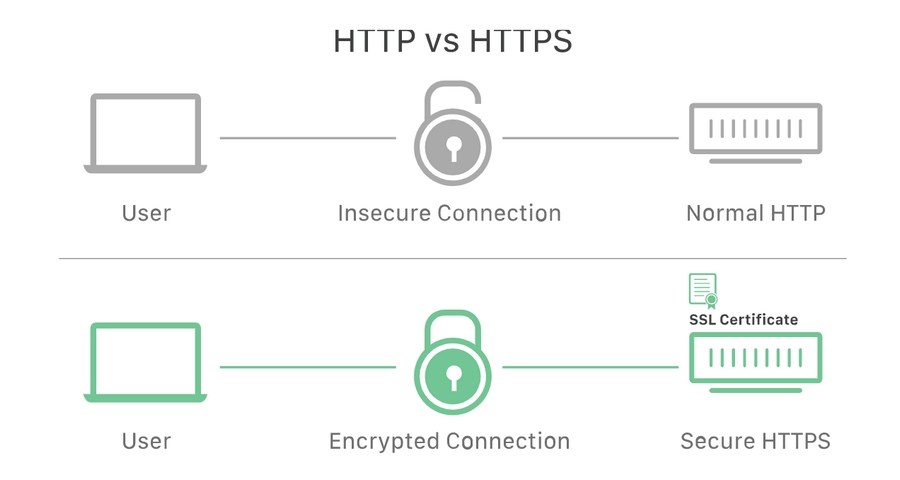
After you’ve changed your domain’s nameservers, you’ll want to enable SSL. Not sure what SSL is? Check out our guide.
While adding SSL isn’t strictly necessary, it’s strongly recommended by virtually everyone. Why?
- It makes your users trust you more. If a store had a sign saying, “Your transactions are not secure while shopping here,” would you want to shop there? Probably not. Websites are the same way. Users instinctively trust domains that have the little lock icon next to them, because it makes them feel safe to use their credit card.
- It makes your site and your users more secure. SSL encrypts your browser session, which prevents bad actors from stealing your data or impersonating you.
- Many browsers display non-SSL sites as insecure. Google Chrome, in particular, will flag any websites not using SSL as insecure inside the browser. As you can imagine, this makes your website look unprofessional and unsafe.
Create a Domain-Specific Email Address
Once you’ve set up SSL, the next step is to create an email address on your domain. Sending from a freemail account like @Gmail.com or @Yahoo.com looks rather unprofessional and definitely doesn’t give your customers an impression of competence.
This is especially true when replying to contact form submissions.
Most hosts have an easy way to set up email accounts, either via cPanel or in their own settings. Here are a few guides:
It’s a good idea to create specific email addresses for handling certain accounts. For example, use [email protected] for registering all of your social media accounts.
Secure Matching Social Media Handles
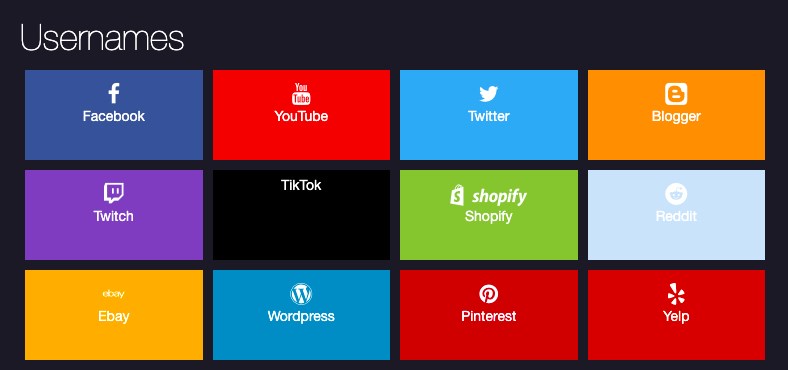
Now is a good time to also register your social media handles, even if you won’t be posting anything for awhile. You should also register the accounts on every social media site and not simply the ones you plan to use: who knows what will happen in the future?
If your name isn’t available, don’t fret: just pick a similar one. Most social media users will look for you in the app, not by typing in the URL. As we mentioned above, even Coca Cola doesn’t own @Coke on Twitter.
To get a quick overview of the different social media sites available, try this tool. And if you’re looking for useful WordPress plugins to use your social media content with, check out our guide.
Start Building Your Website
Finally, you’re ready to start building your site! If you’re using WordPress, check out the Astra theme, the most popular WordPress theme available. We have a ton of templates and plugins to match whatever you need!
Conclusion
While you probably knew the basics of domain names before, you’re now a bonafide expert. Before starting any project, be sure to run through our list of tools and tips above.
How do you come with domain names for your projects? And when you do, what registrar do you use? We’re always looking for new suggestions, tips, and tricks, so let us know in the comments!
Disclosure: This blog may contain affiliate links. If you make a purchase through one of these links, we may receive a small commission. Read disclosure. Rest assured that we only recommend products that we have personally used and believe will add value to our readers. Thanks for your support!






Great post! your post is very informative
Glad that it helped, Mike!
Great post! Very thorough and informative
You made a good point when you said that you must choose a domain name that is simple and easy to remember since there are so many websites online today. This must be a good tip for business owners who need to find a reliable domain broker to start building their website. I could imagine how they could follow your tips to create a stronger online presence and ensure better profit. https://chriszuiker.com/domain-broker/